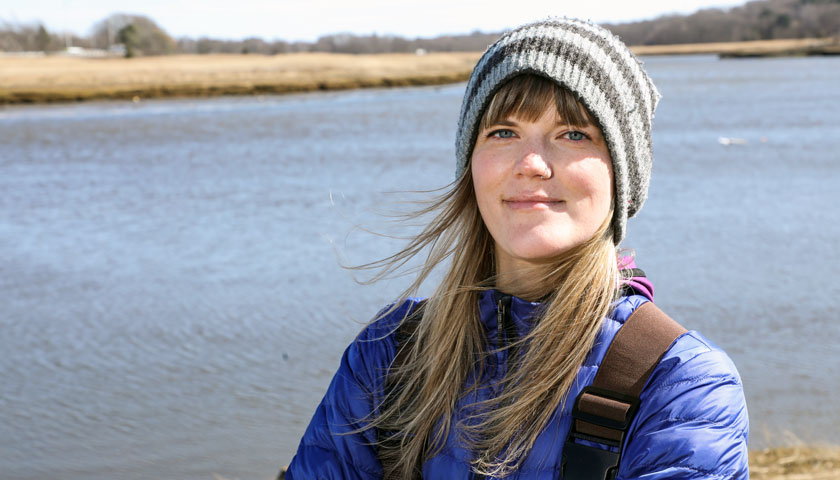From the Pristine to the Polluted

As Center for Urban Ecology and Sustainability Professor Hayley Schiebel embarks on a yearlong research project this summer, she’ll begin to tell a tale of two drastically different environments.
Schiebel and colleagues at Brown University are making preparations for the study, funded by a $595,000 grant from the National Science Foundation. Soon they’ll travel to Oahu, Hawaii, and Chang-Dao Island, China, to gather atmospheric aerosol and rainwater samples along with seasonal surface ocean water samples. Comparing levels of man-made nitrogen along the two coastlines throughout the year is expected to yield valuable data on the impact of industry and agriculture on ocean health.
Burning fossil fuels, wastewater treatment, and fertilizer use all contribute to anthropogenic—or human-generated—nitrogen in the environment. Since these nitrogen molecules are chemically distinct from those that occur naturally, the scientists can identify and measure how much nitrogen made its way into the ocean as a result of human activity.
“We chose these two sites because we suspect to find different sources of nitrogen at each location,” says Schiebel. “Recent observations in the North Pacific Ocean suggest that the external or anthropogenic supply of nitrogen could be significant, but there is a lack of connection between atmospheric and oceanic studies in the literature. We hope to see anthropogenic emissions via isotopic studies in China compared to natural, marine sources of nitrogen near Hawaii.”
While nitrogen is a necessary component for ocean health, too much of it can be destructive.
“An overabundance of nitrogen can stimulate photosynthesis by harmful algae or modify how nutrients cycle through the ocean and atmosphere. Most importantly, we want to know where the nitrogen is coming from in the ocean and how much more that humans have been adding to the system to understand the scale and magnitude of the input,” says Schiebel.
Comparing the two locations will help Schiebel and her colleagues determine the true impact of human activity on oceanic nitrogen levels. It might also yield insight into seasonal changes in nitrogen deposits and cycling. Past studies have found a seasonal shift in the nitrogen inputs in other ocean basins, but there is a paucity of these measurements in the North Pacific Ocean specifically.
Schiebel will make her first trips to the research sites in Hawaii and China in June. She and a Suffolk undergraduate student research assistant will analyze samples sent by local researchers throughout the next year and report on the data next summer.
Contact
Greg Gatlin
Office of Public Affairs
617-573-8428
Andrea Grant
Office of Public Affairs
617-573-8410



